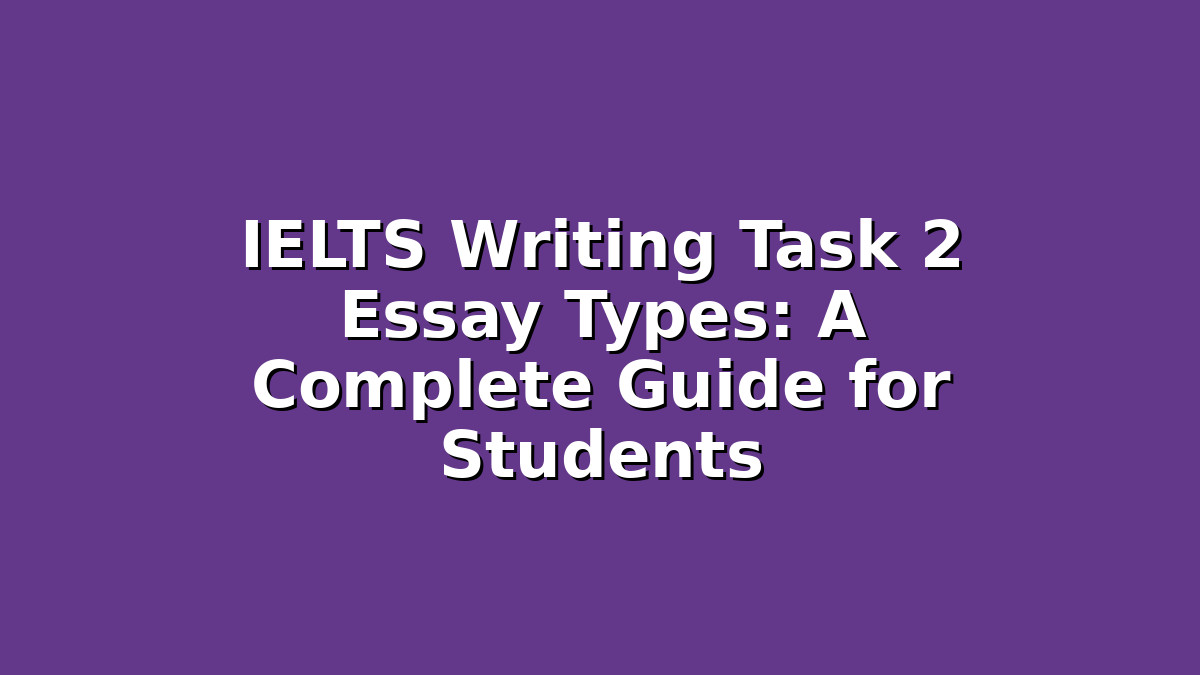Preparing for the IELTS exam can be a challenging journey, especially when it comes to mastering the Writing Task 2 section. This part of the test requires you to write a formal essay in response to a prompt, typically within 250 words and 40 minutes. Success in this task hinges not only on your English language skills but also on your ability to understand different essay types and structure your response accordingly. In this comprehensive guide, we will explore the main IELTS Writing Task 2 essay types, provide practical tips for each, and help you build the confidence you need to excel on test day.
Understanding IELTS Writing Task 2 Essay Types
The IELTS Writing Task 2 essay prompts generally fall into several key types. Recognizing these types is vital because each demands a slightly different approach. The most common essay types you will encounter are:
1. Opinion (Agree or Disagree) Essays
2. Discussion (Discuss Both Views) Essays
3. Problem-Solution Essays
4. Advantages and Disadvantages Essays
5. Direct Question (Two-part Question) Essays
Let’s break down these essay types and explore how to tackle them effectively.
—
1. Opinion (Agree or Disagree) Essays
In an opinion essay, you are asked to state your position on a particular statement. The question will typically ask whether you agree or disagree, or to what extent you agree. Your job is to clearly state your opinion and support it with reasons and examples.
Study Tips:
– Take a clear stance: Decide whether you completely agree, completely disagree, or partly agree with the statement. Avoid writing an essay that tries to do both.
– Plan your ideas: Spend 5–7 minutes brainstorming reasons for your position. Think of relevant examples from your personal experience, studies, or current events.
– Structure your essay: Use a clear introduction to state your opinion, two or three body paragraphs to explain your reasons with examples, and a succinct conclusion reaffirming your stance.
– Practice expressing opinions: Use phrases like “I strongly believe that…,” “In my opinion…,” or “It is clear that…” to make your viewpoint clear.
Example prompt:
“Some people believe that education should be free for all students. To what extent do you agree or disagree?”
—
2. Discussion (Discuss Both Views) Essays
These essays ask you to present both sides of an argument and then give your own opinion. This type is common and tests your ability to evaluate contrasting viewpoints fairly before stating a reasoned conclusion.
Study Tips:
– Identify the two views: Carefully read the prompt to understand the two sides you need to discuss.
– Use balanced paragraphs: Dedicate one paragraph to explaining the first view, another paragraph to the opposing view, and then a final paragraph to your opinion.
– Signal your opinion clearly: Your conclusion should not be vague. Summarize the discussion and clearly state which side you support and why.
– Use linking words: Words like “on the one hand,” “however,” “in contrast,” and “therefore” help to clearly organize your essay and guide the reader through your argument.
Example prompt:
“Some people think that governments should spend more money on public services rather than arts like music and theater. Discuss both views and give your opinion.”
—
3. Problem-Solution Essays
In problem-solution essays, you are asked to identify one or more problems related to a particular issue and suggest possible solutions. This type tests your critical thinking and problem-solving skills, alongside your writing ability.
Study Tips:
– Analyze the problem: Clearly explain the causes and effects of the problem in the first body paragraph.
– Offer practical solutions: In the next paragraph, suggest realistic and specific solutions, supporting them with reasons why they would work.
– Stay focused: Avoid straying off-topic by sticking to the problem and solutions directly related to the prompt.
– Use appropriate vocabulary: Phrases like “One major problem is…,” “This leads to…,” “A possible solution could be…,” and “To address this issue…” will help you articulate your ideas clearly.
Example prompt:
“Many cities around the world are facing traffic congestion. What are the main causes of this problem, and what solutions can you suggest?”
—
Additional Tips for Exceling at IELTS Writing Task 2
– Practice with timed writing: Get used to writing essays within the 40-minute time limit to improve your time management.
– Plan before writing: Spend a few minutes brainstorming and outlining your essay structure to stay organized.
– Check your work: Save 3–5 minutes at the end to review your essay for grammar mistakes, spelling errors, and clarity.
– Expand your vocabulary: Learn synonyms and academic phrases to avoid repetition and make your writing more engaging.
– Read sample essays: Analyze high-scoring IELTS essays to understand how ideas are developed and supported.
—
Conclusion
Mastering IELTS Writing Task 2 requires understanding the different essay types and tailoring your response accordingly. Whether it’s stating your opinion, discussing contrasting views, or proposing solutions to problems, the key is to organize your ideas clearly and support them with relevant examples. Remember, practice and preparation are your best allies. Take time to familiarize yourself with each essay type, plan your essays carefully, and build your confidence with regular writing practice. With dedication and the right approach, you can achieve a high band score and move one step closer to your goals.
Good luck with your IELTS preparation – you’ve got this!

Responses